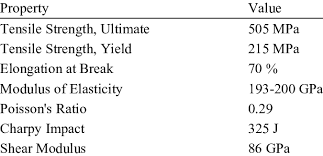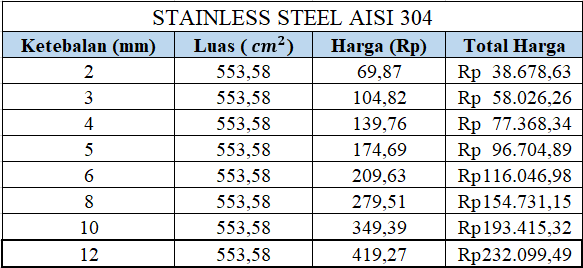Difference between revisions of "Zharfan Rosyad"
(→Optimasi Penyimpanan) |
(→Optimasi Penyimpanan) |
||
| Line 37: | Line 37: | ||
saya mengunakan pemrograman python dengan bantuan library scipy.optimize untuk meminimalkan material dengan mengoptimalkan luas area plat yang dibutuhkan dengan pemrograman seperti dibawah: | saya mengunakan pemrograman python dengan bantuan library scipy.optimize untuk meminimalkan material dengan mengoptimalkan luas area plat yang dibutuhkan dengan pemrograman seperti dibawah: | ||
| − | import math | + | <br>import math |
| − | from scipy.optimize import minimize | + | <br>from scipy.optimize import minimize |
def Volume(x): | def Volume(x): | ||
Revision as of 07:50, 12 June 2023
Introduction
Halo semua. Perkenalkan nama saya Zharfan Rosyad biasa dipanggil Zharfan dengan NPM 2106707366, saya merupakan mahasiswa aktif departemen Teknik Mesin UI angkatan 2021 saat ini saya sedang menjalani perkuliahan di kelas Metode Numerik 01
Pressurized Hydrogen Storage Optimization
Progress Pekan 1
Task: Optimasi tangki hidrogen dengan kapasitas 1 liter, pressure 8 bar, dan biaya produksi maksimal Rp. 500.000
Dalam merencang suatu tangki hidrogen sebagai seorang engineer perlu meninjau dari berbagai macam faktor. berikut merupakan faktor yang harus ditinjau :
1. Material Selection:
Choose materials that are suitable for storing pressurized hydrogen. Common materials include high-strength steel, aluminum, or carbon fiber composites. The selected materials should have sufficient strength and corrosion resistance to withstand high-pressure hydrogen and ensure long-term durability.
2. Pressure:
Determine the desired pressure rating for the storage system based on the application requirements. Consider factors such as hydrogen storage capacity, system weight, and safety considerations. Ensure that the storage vessel and associated components can safely contain the intended pressure without deformation or leakage.
3. Safety Features:
Incorporate safety features into the storage system design. This may include pressure relief devices, such as pressure relief valves or rupture disks, to prevent overpressure situations. Implement measures for thermal management, such as pressure relief devices or cooling systems, to handle potential temperature fluctuations during operation.
4. Structural Integrity:
Design the storage vessel to have structural integrity and resistance to external loads. Consider factors such as mechanical stress, fatigue, and vibration to ensure the storage system can withstand various operational conditions. Perform rigorous structural analysis and testing to validate the design's integrity.
5. Leakage Prevention:
Implement effective sealing mechanisms to prevent hydrogen leakage. This involves using appropriate sealing materials, such as gaskets or O-rings, and ensuring proper installation and maintenance procedures. Conduct leak testing during manufacturing and periodically inspect the system for potential leakage points.
6. Temperature Management:
Develop strategies for managing temperature fluctuations within the storage system. Thermal insulation materials and design considerations should be employed to minimize heat transfer and maintain the hydrogen at the desired temperature range. This is particularly important for cryogenic hydrogen storage systems.
7. Finance:
create a system according to existing needs and finances, there is no need to cut material or reduce the type of material because this is related to the security and safety of the surrounding environment
Optimasi Penyimpanan
Untuk merancang suatu penyimpanan hidrogen dengan volume 1 liter, tekanan 8 bar, dan harga maksimal 500,000 rupiah. hal pertama yang harus dilakukan dengan meminimalisir penggunaan material agar pengeluaran yang digunakan untuk pembelian material. saya mengunakan pemrograman python dengan bantuan library scipy.optimize untuk meminimalkan material dengan mengoptimalkan luas area plat yang dibutuhkan dengan pemrograman seperti dibawah:
import math
from scipy.optimize import minimize
def Volume(x):
x1 = x[0] #Radius x2 = x[1] #Tinggi return math.pi * x1**2 * x2
def Area(x):
return 2 * math.pi * x[0]**2 + 2 * math.pi * x[0] * x[1]
def objective(x):
return Area(x)
def constraint(x):
return (Volume(x)-1000)
x0 = [1.0,1.0]
b = (0,100) bnds = (b,b) cons = ({'type':'ineq','fun':constraint})
sol = minimize(objective,x0,method='SLSQP',bounds = bnds,constraints=cons)
xOpt = sol.x AreaOpt = sol.fun
print ('Radius Optimal:',str(xOpt[0]),'cm')
print ('Tinggi Optimal:',str(xOpt[1]),'cm')
print ('Luas pelat Optimal:',str(AreaOpt),'cm²')
Dari program tersebut didapatkan hasil sebagai berikut:
Radius Optimal: 5.4192431645828645 cm Tinggi Optimal: 10.838591552942797 cm Luas pelat Optimal: 553.5810446867329 cm²
tahap selanjtnya merupakan pemilihan material, setelah mencari ketebalan plat optimal yaitu 6 mm dengan spesifikasi yang telah diberikan jenis material yang cocok adalah stainless steel 304 karena kuat,tahan korosi, dan juga harga lebih murah dibanding stainless steel 316



